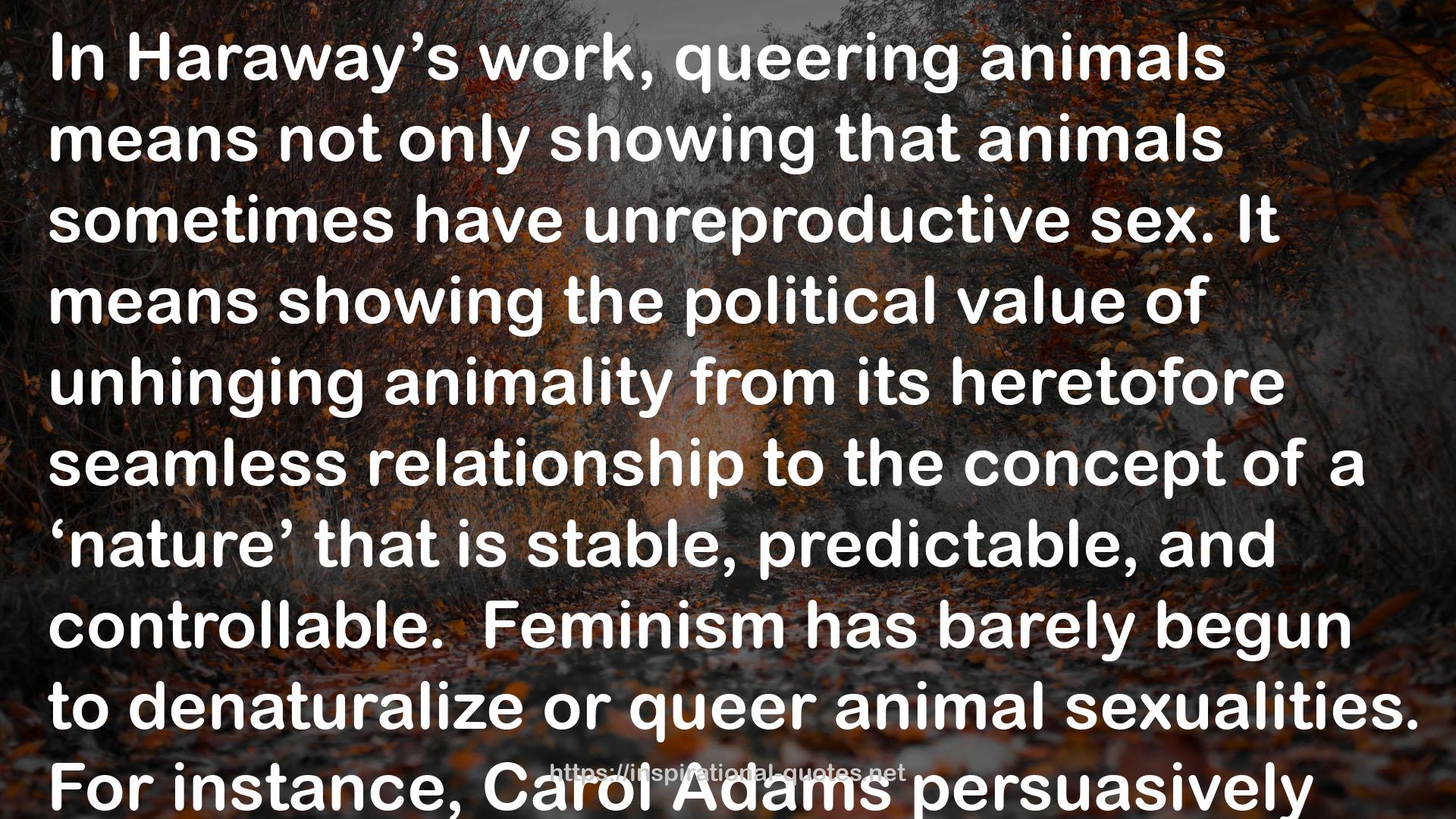" In Haraway’s work, queering animals means not only showing that animals sometimes have unreproductive sex. It means showing the political value of unhinging animality from its heretofore seamless relationship to the concept of a ‘nature’ that is stable, predictable, and controllable.
Feminism has barely begun to denaturalize or queer animal sexualities. For instance, Carol Adams persuasively argues that the sexual objectification and consumption of animals and of women follow the same models…She proposes that feminism approach the animalizing of women and the feminization of animals in patriarchal culture as a unique opportunity, namely the chance to study the oppression of animals as a particular symptom of androcentric social organization. However, Adams’s work on the visual culture aspect of meat consumption is devoted to exposing the logic and structure of a pattern of oppression and exploitation, a position depending on one important assumption: that humans are the only actors in this practice. The structure of her argument makes power and privilege pretty unambiguously distinguishable from subjugation. In that sense, it offers rather limited resources for a post- or neo-Foucauldian feminist analysis of power, desire, and norms, the production of truths and practices, and the complexities of self-care. "
― , Beyond the Cyborg: Adventures with Donna Haraway
